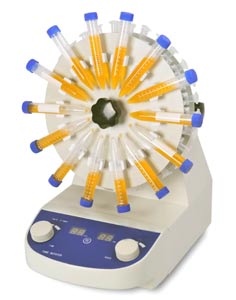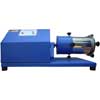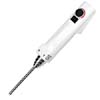Laboratory mixers are one of the most useful instruments that are widely used to get a homogenous mixture from one or more than one ingredient. The mixers find their wide application in different industries such as pharmaceutical, food and beverage, cosmetics, electronics, and many more. Besides, it is also used in those labs that deal with wastewater treatment, life sciences, etc.
The lab mixer enables the mixing of small quantities of material that usually ranges up to 100 gallons. It also handles such mixtures that have viscosities up to 150,000 cps that depend on the torque, speed, and horsepower of the mixer. Its motors are available as a universal, permanent magnet, or air-drive. One can choose various mixer mounts to mount support stands or tanks
How Laboratory Mixers Works?
Bionics Scientific Technologies Pvt. Ltd is known as one of the best Laboratory Mixers Manufacturers/suppliers in India. The mixer offered by the company works on the simple and easy principles that are illustrated here. Check out the below mentioned easy steps to know how laboratory mixers work:
1. The high-speed rotation of the rotor blades that is present inside the precision-machine mixing work-head. This exhibits a powerful suction. This draws solid and liquid materials upwards from the vessel’s bottom and also into the workhead’s center.
2. A centrifugal force drives materials towards the boundary of the workhead where it exerts milling action in the precision-machined clearance that is present between the inner wall of the stator and the rotor blade’s end
3. Then there’s an intense hydraulic shear because the materials are forced at a very high velocity that comes out via the perforations present in the stator. This is then circulated into the mixture’s main body.
4. Expelled materials from the head are projected radially at a high speed towards the mixing vessel’s sides. Simultaneously, the fresh material is continuously drawn into the workhead that maintains the mixing cycle. The effect of the radial expulsion and suction into the head is all set for a circulation pattern. This reduces aeration that is caused by the disturbance on the surface of the liquid.
Types of Laboratory Mixers and its Applications
1. Laboratory Blender : The blender comes with a two-speed self-lubricating motor, a two-speed self-lubricating motor and surgical steel blades. It can process free-flowing material, up to 2 liters, with high liquid content. Such a laboratory blender is designed to function with high volatile substance. This finds its wide application in food industries, pharmaceutical industries, and biology and chemical labs, to name a few.
2. Vortex Mixer : It is used for mixing samples rapidly. The high rpm and small footprint make it important lab equipment. This simple and easy-to-use device is widely used in microbiology, Bioscience, analytical and biochemical laboratory. It is used to set mix small liquids vials in an oscillating circular motion. When the rubber cup holder’s motion on the mixer is transferred to the sample (liquid), a vortex is generated. It is available at different speeds.
3. Test Tube Rotator : It is a synchronous motor that is with a rotation speed of 5-50 rpm that is optimum for mixing diffusion, extraction, and dialysis. This rotator has plastic-coated spring clips and is changeable from horizontal to vertical angles for mixing. The timer setting in the test tube rotator can be done from 0-99 hrs/ 1-59 min.
4. Roller Mixer : It is known for fast and rocking rotating actions that are suitable to mix viscous substances, blood samples, and liquid-solid suspensions. This has non-slip rollers that allow users to work efficiently. The compact design of the roller mixer makes it an ideal choice for the lab as well as fieldwork.
5. Laboratory Ball Mill : It is mainly used to grind pigments. The material is grounded at the desired speed with the aid of a specific quantity of steel balls (grinding media) for a defined time. This finds its application to ground cement samples in the lab and is provided with a revolution counter to record revolutions. It is widely used in different industries such as granite, paint, cement, tile, and plastic.
6. Tissue Homogenizer : This is used to homogenize different types of materials such as food, plant, tissue, soil, etc. The homogenizer breaks tissues into their ingredient and based on it, various techniques are used further.






